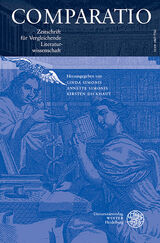Autor: Annette Simonis
- «
- 1
- »
Die Suche erzielte 5 Treffer.
Zur Metaphorik des Kulturtransfers und Kulturaustauschs um 1800. ,Verpflanzungen‘ bei Herder, Goethe, Schiller und Co. Beitrag
„Maintenant l’imaginaire ?“ Konzepte des Imaginären in Poetik und Wissenschaft im Frankreich des 20. Jahrhunderts Beitrag
Einleitung: Das kulturelle Imaginäre. Perspektiven und Impulse eines kulturwissenschaftlichen Schlüsselkonzepts Beitrag
Romulus Augustulus. Überraschendes ‚Nachleben‘ des ‚letzten Römers‘ in Moderne und Gegenwart Beitrag
- «
- 1
- »
